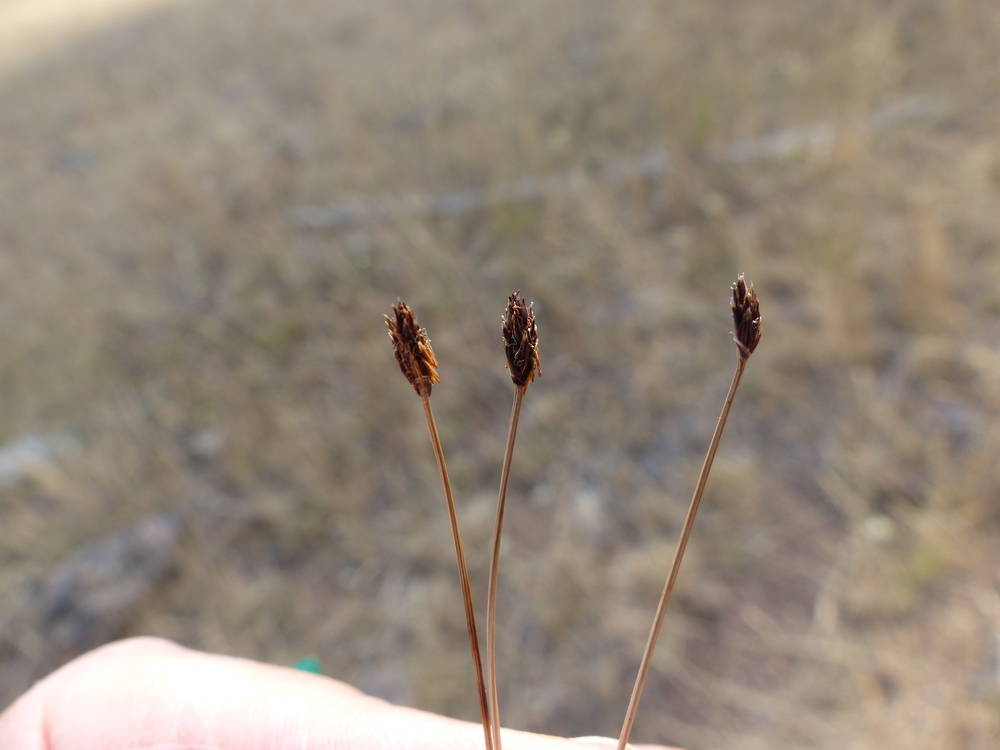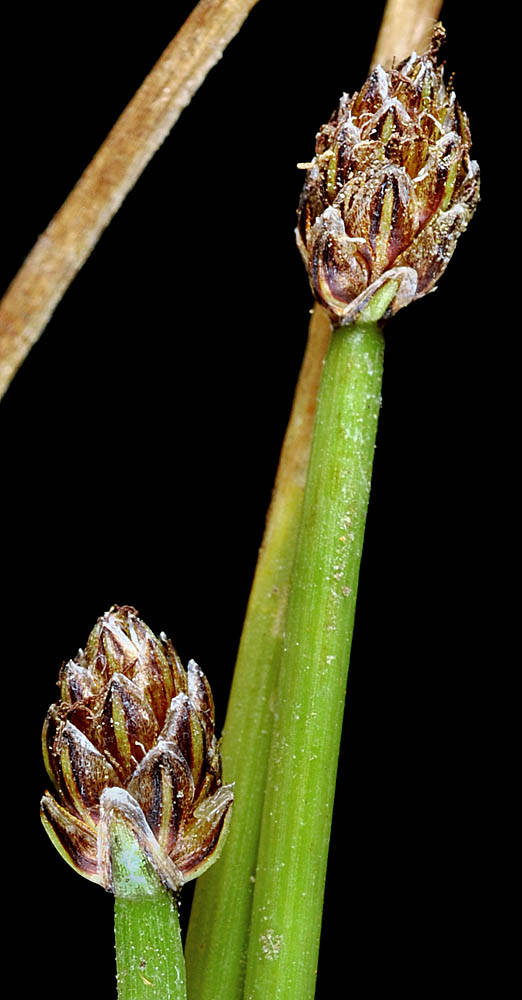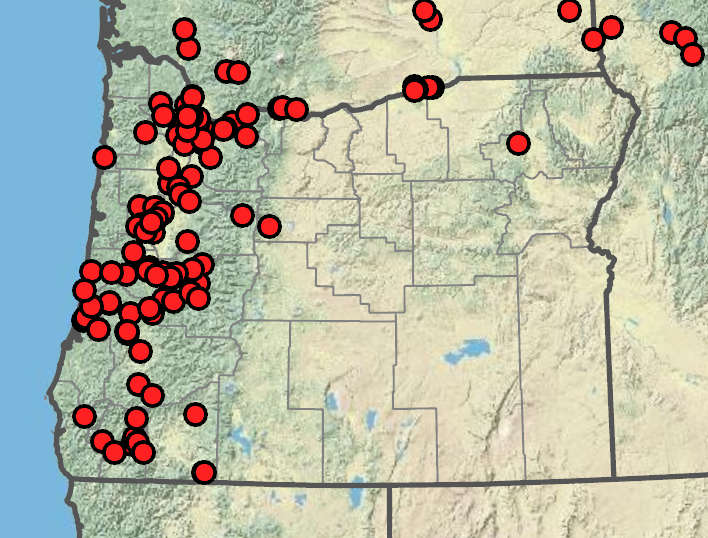Eleocharis bolanderi
Eleocharis obtusa
Bolander's spikerush
blunt spikerush
subterete, 10–30 cm × 0.3–0.5 mm.
terete, 3–50(90) cm × 0.2–2 mm.
ovoid, 3–8 × 2–3 mm;
proximal scale clasping; entire, subproximal scale with flower; floral scales 8–30, 4–5 per mm of rachilla, 2–3 × 1.5 mm;
apex entire; acute, often keeled in distal part of spike.
usually broadly ovoid; (2)5–13 × (2)3–4 mm; floral scales 15–150+, 8–20 per mm of rachilla, 1.5–2.5 × 1–1.5 mm;
apex broadly rounded.
perianth bristles 3–6, often unequal; from rudimentary to 50% of achene length;
anthers 0.9–1.4 mm;
stigmas 3.
perianth bristles (5)6–7, rarely 0, slightly to usually greatly exceeding tubercle;
stamens (2)3;
anthers 0.3–0.6 mm;
stigmas usually 3 and 2 in the same spike.
slightly to greatly compressed-trigonous, rarely thickly lenticular, 0.9–1.2 × 0.65–0.8 mm.
biconvex or to 33% greatly compressed trigonous, 0.9–1.2(1.3) × 0.7–0.9 mm.
persistent, not splitting;
apex obtuse, rarely hardened, lacking a tooth.
persistent, apex of distal leaf sheath obtuse to acute; tooth to 0.3 mm.
flat to shallowly pyramidal; lower than wide, 0.1–0.3 × 0.4–0.65 mm.
deltoid 0.35–0.5 × (0.4)0.5–0.8 mm, 33–50% as high as wide, 33–50% as high and 67–90% as wide as achene.
=10.
Eleocharis bolanderi
Eleocharis obtusa
Shallow, rocky, ephemeral streams. 1100–2100 m. BR, BW, Owy. CA, NV, ID; east to CO. Native.
Eleocharis bolanderi is easily recognized in summer when it forms masses of dry, brown, dormant and apparently dead culms in dry stream beds. It is easily pulled up to expose its cespitose habit. The virtually flat tubercles are particularly distinctive.
Freshwater shores exposed by seasonal low water levels, marshes, and disturbed wetlands. 0–1300 m. BW, Casc, Col, CR, ECas, Est, Sisk, WV. CA, ID, WA; north to British Columbia, east to Nova Scotia, southeast to FL, HI. Native.
Eleocharis obtusa is our most common tough, annual, cespitose spikerush. It is sometimes considered to be the same species as E. ovata, which generally has two stamens and two stigmas and has narrower tubercles. See also E. engelmannii.
Barbara Wilson, Richard Brainerd, Nick Otting
Barbara Wilson, Richard Brainerd, Nick Otting
- Local floras:
CA,
OR,
WA
- Local Web sites:
CalFlora,
CalPhotos,
Flora NW,
PNW Herbaria
WildflowerSearch
iNaturalist (observations)
USDA Plants Database
- LBJ Wildflower Center
- SEINet
- Plants of the World Online
- Encyclopedia of Life
- Wikipedia
- Google Image Search
- Local floras:
BC,
CA,
OR,
WA
- Local Web sites:
CalFlora,
CalPhotos,
Flora NW,
PNW Herbaria
WildflowerSearch
iNaturalist (observations)
USDA Plants Database
- LBJ Wildflower Center
- SEINet
- Plants of the World Online
- Encyclopedia of Life
- Wikipedia
- Google Image Search





